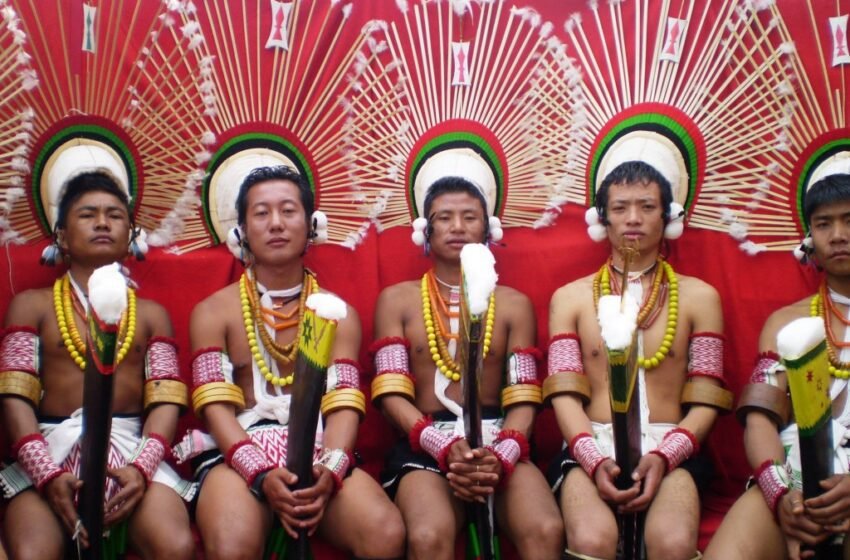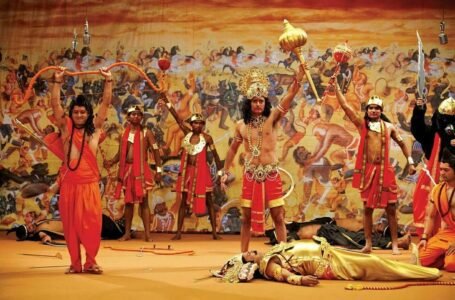Zeliang Naga Songs: Echoes of Folklore, Nature, and War

OLYMPUS DIGITAL CAMERA
The easternmost state of Nagaland is really a treasure trove of culture, customs and unique forms of arts and crafts and for this reason, it is fondly called the ‘Land of Festivals’. Interestingly among the richest cultural assets is the Zeliang Naga song which are the tribal songs which tell rich histories, spirituality and togetherness of the Zeliangrong society. The best of these songs are performed during cultural fairs only but have significant meaning and are part and parcel of these people’s existence.
What do we understand by Zeliang Naga songs ?
Zeliang Naga songs are, traditional Zeliangrong tribal songs of Naga origin that originated from an ethno-cultural group that comprises Zeme, Liangmai, Rongmei and related sub-tribes from Nagaland, Manipur and Assam. The term Zeliang is compounded from parts of the tribal names of Zeme and Liangmai, given emphatically to underscore that these are tribal areas. These and many other songs are not just mere songs and tunes, but are narratives, rituals and lungs of communities. They embrace the perception of the Zeliangrong people by acting as a mediator between the historical culture and the modern culture of the community.
The Performance of Zeliang Naga songs
Zeliang Naga songs and dances are informal or secular, rendered in colourful ceremonial sets, at festivals, births, marriages, deaths etc. The songs are followed by dances; people dance as they are coordinated in movements, are an indication of group harmony. These performances include music equipments such as a drum, gong, and flute to provide rhythmic, which complements to the emotionated songs in performances. Performers of the singers and dancers wear trousseau that culturally melts elaborate beaded apron, feathers originating from parts of land. Participation seems to be the hallmark of these performances. The whole community can participate either as a performer and as a spectator, which contributes to the creation of a shared historical memory and socio identity.
Folklore, Nature and War
Folklore
Zeliang Naga songs carry folk lore themes and creational stories, warrior exploit and tales of various fantastic creatures. These are stories told from one generation to the other in order to pass the culture and ethic values of the tribe to the new generation. For instance, songs may give account on episodes where early generations of the society portrayed daring or a peculiar wisdom, which is expected of everyone within that society.
Nature
Emphasis is laid on enumeration of the tribal respect towards nature in the songs of Zeliang Naga tribe. Sometimes the themes refer to hills, rivers, and forests that are characteristic of the identity of these people. Cycles, agricultural activities, and any other natural phenomenon has been depicted, and this portrays to the world that indeed the tribe from which the name came from valued natural resources.
War
Traditionally, the Zeliangrong tribes fought wars against each other; and one can make a strong testimony of this in their songs. These compositions are of narrations that describe the acts of individual warriors, tactics used in fights, and the losses for the entire group. Most often than not they do not only remind its listeners of the fallen warriors but also create amongst them pride and a reinforced willingness to fight to death.
Why is Zeliang Naga Song Culture Restricted to Cultural Fairs Most of the Time?
The factors, which contributed to the decrease in the frequency of performing Zeliang Naga songs are as follows. Technological advance and the process of urbanization in particular have resulted in the fact that the young generation no longer consistently applies traditional techniques inherited from their ancestors. Further, the culture of the western countries has engulfed indigenous music and such other forms of arts. It is now very limited only to cultural fests, where it is presented as a part of cultural representation. Although these festivals support the songs, a transition from daily use to seasonal occasions has watered down the environments supporting the songs.
Some of the Leading Players involved in Zeliang Naga Songs Documentation
Many people and institutions possesses a very important place in terms of the preservation and promotion of Zeliang Naga songs. These songs have been recorded by ethnomusicologists and cultural activists, and other elderly tribesman so that they are not forgotten. Moreover, actions have been taken by institutions such as the North East Zone Cultural Centre (NEZCC) and local cultural societies have perform, conduct workshops and record these songs. Young generation artists and musicians from Zeliangrong society also had adopted some form of traditional Zeliangrong technique in different contemporary forms.
The Origin and the Importance of Zeliang Naga Songs
The background of Zeliang Naga songs are rooted with the historical practices that are associated the Zeliangrong cultural units. Such songs evolved into meaningful; means, through which the experiences, beliefs, and aspirations of the community could be described. Pots were involved in the religious and ceremonial activities, farming practices, and other social events for use, and for decoration.
The importance of such songs, compiling lists of people one loved, must not be viewed isolated from a plethora of possibilities. They are:
– Historical Records:-Let us follow the timeline of the development of the mentioned tribe.
– Spiritual Expressions: In dance, being an intermediary between humans and God or spirits.
– Social Cohesion Tools: Increasing and enhancing interaction among the people of the community.
– Educational Resources: Educating and teaching the right and wrong and other useful knowledge and values.
Zeliang Naga Folksongs Restored
To bring Zeliang Naga songs into practice, there is a desperate need to transform them into modern world forms and appeals while receding their originality. Future generations can thus be embraced by such education related action as updating these songs into the curricula of the respective schools . Performances and storytelling, as well as tutorials and personal bios, can be posted and viewed across digital platforms. Mainstream artists can also participate in projects, in order to raise awareness to this type of artwork.
The Zeliang Naga songs of Nagaland hold a profound cultural and historical significance, offering a window into the rich tapestry of the Zeliangrong community’s traditions and way of life. These traditional tribal songs serve as oral archives, preserving folklore, myths, and collective memories of the tribe. They narrate tales of valor, communal harmony, reverence for nature, and the spiritual connection the people share with their environment. Despite their importance, these songs are now rarely performed outside cultural festivals, making efforts to document and revive them vital for preserving this intangible heritage.
A central theme in Zeliang Naga songs is their connection to folklore and storytelling. The songs are not merely artistic expressions but are deeply intertwined with the oral tradition that has been passed down for generations. They recount stories of legendary ancestors, spirits, and deities, often serving as moral and educational guides for the community. Through melodic chants and poetic lyrics, they emphasize the importance of unity, courage, and respect for the land, reflecting the Zeliangrong people’s intrinsic relationship with their natural surroundings.
Nature plays a pivotal role in these songs, both as a source of inspiration and as a subject of veneration. The Zeliangrong people, like many indigenous communities, consider nature to be sacred. Their songs often celebrate the seasons, agricultural cycles, and the flora and fauna of Nagaland, capturing the rhythm of life that is intricately linked to the environment. This deep ecological consciousness, embedded in their music, underscores the importance of sustainable living and environmental stewardship, themes that resonate strongly in today’s global discourse on climate change and conservation.
Another fascinating aspect of Zeliang Naga songs is their connection to war and heroism. These songs commemorate the bravery and sacrifices of warriors, preserving the tribe’s martial history. They often narrate vivid accounts of battles fought to protect their land and community, highlighting the cultural values of loyalty, courage, and resilience. Such songs serve as a source of inspiration and pride, reinforcing a shared sense of identity and belonging among the Zeliangrong people.
The performance of these songs is an art form in itself, blending intricate vocal techniques with traditional instruments like the bamboo flute, drums, and log xylophones. The melodies are rhythmic and evocative, often accompanied by elaborate dance rituals that add a visual dimension to the storytelling. This synergy of music and movement is not only entertaining but also a powerful medium for cultural expression and preservation.
However, modern influences and changing lifestyles have led to a decline in the practice and transmission of these songs. They are now primarily performed during cultural festivals or special occasions, which, while valuable, limits their reach and relevance in daily life. Efforts to revitalize these traditions, such as through community workshops, recordings, and educational initiatives, are essential to ensure their survival.
Zeliang Naga songs, though rooted in a specific tribal context, carry universal themes of humanity’s relationship with nature, the importance of storytelling, and the celebration of communal bonds. They serve as a reminder of the richness of indigenous heritage and the need to preserve such traditions in an ever-globalizing world. Their melodies, though fading, echo timeless lessons for all who choose to listen.
Songs of Zeliang Naga, or dance to the tunes depicts the culture and tradition of Zeliangrong people. Through mnemonology they are able to capture the entire community norms, religion and relationship with nature and hence can offer an ethnographic view of community. Although there are challenges from modernization, it is clear that with multilateral efforts of the persons, groups, and the community the legacy can be save and revived. When one recognizes and encourage the Zeliang Naga songs, one is really enjoying the gilt of humanity in as much as ensuring the preservation of these manifestations for future generations.


